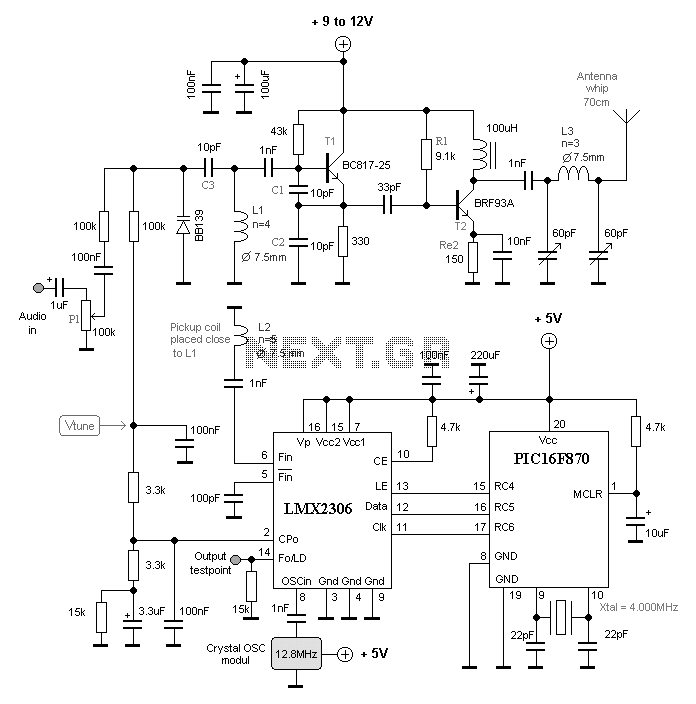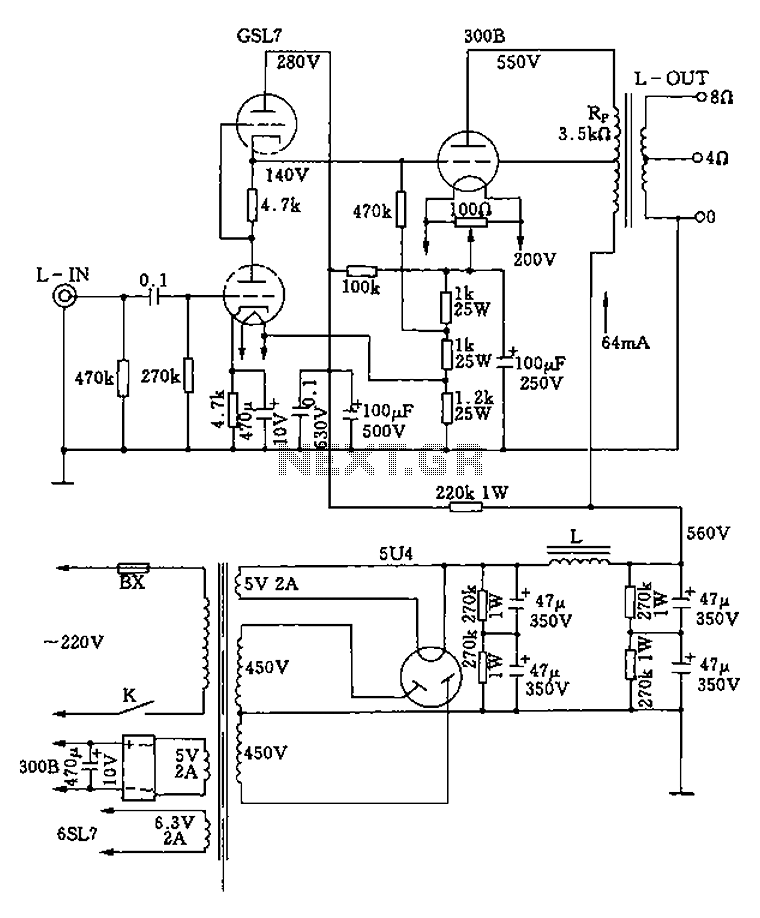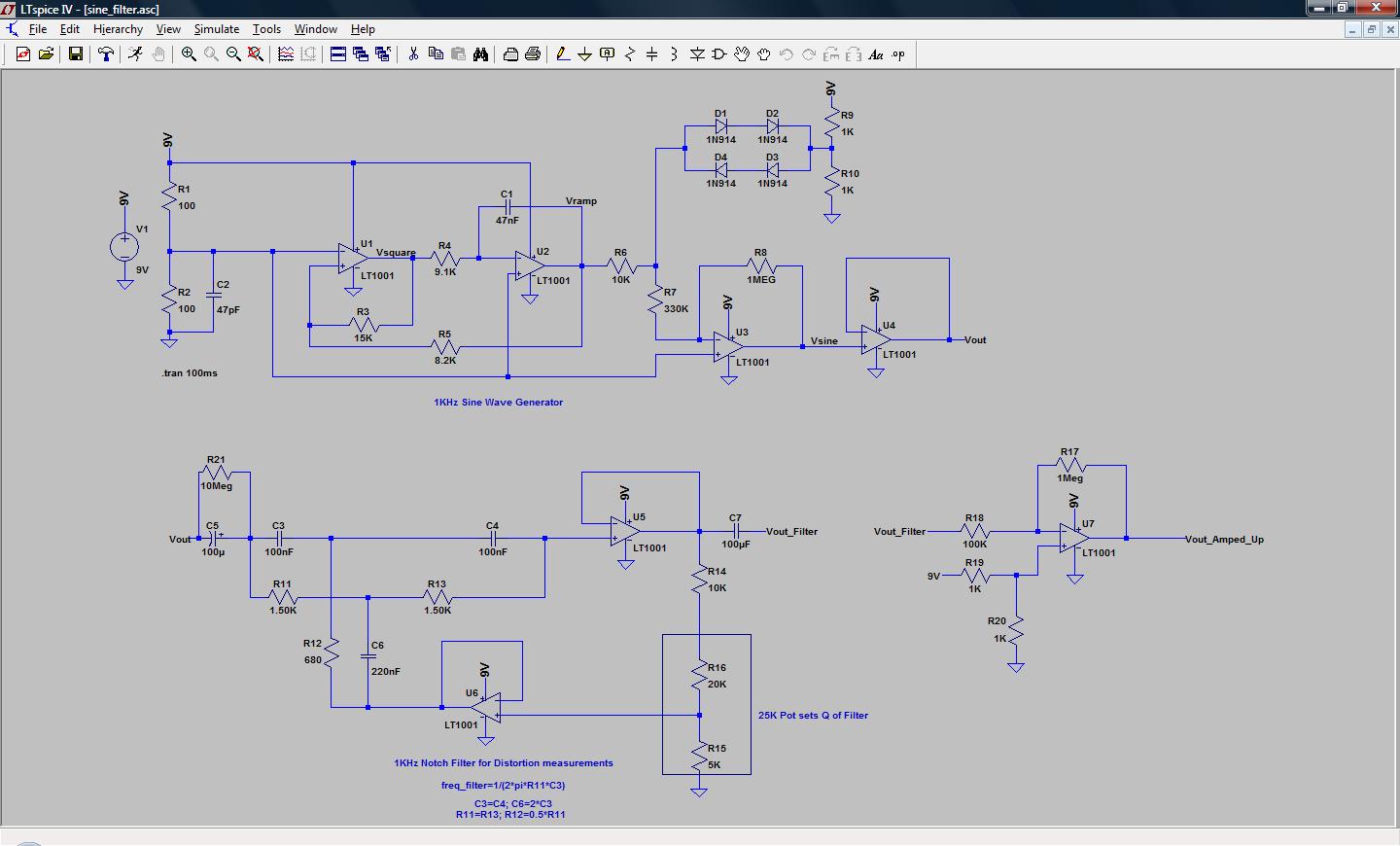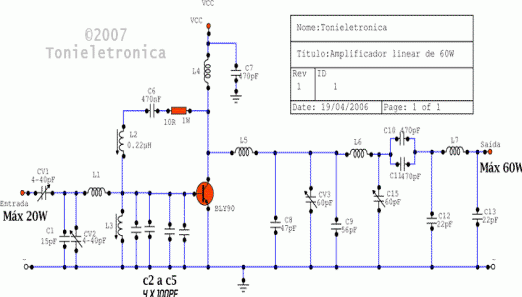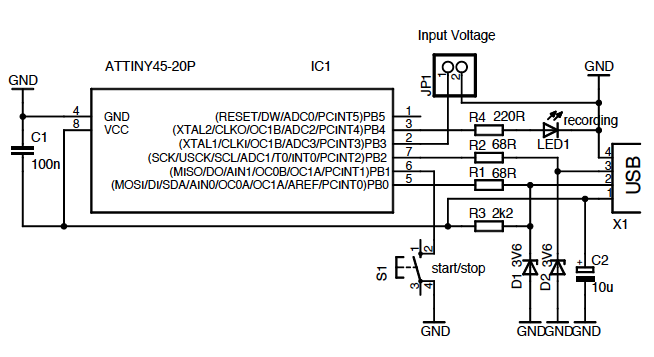
RF amplifier and filter for 144 MHz
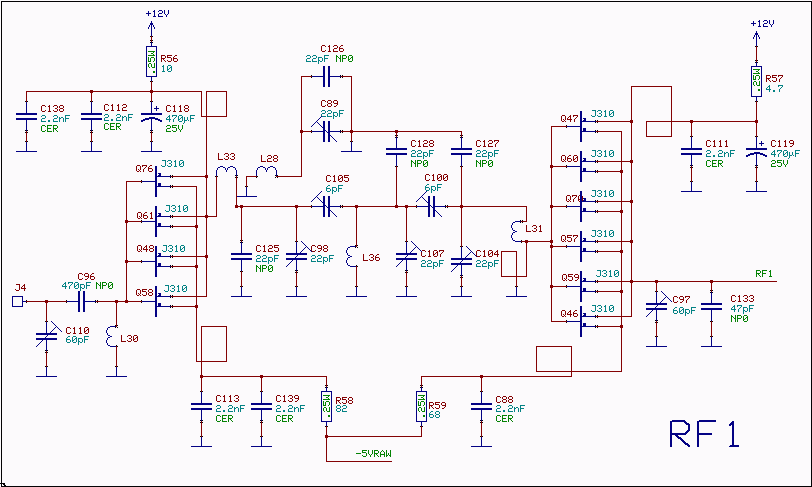
The RF amplifiers utilize noiseless feedback through the drain-gate capacitance, incorporating an inductor in the source lead to achieve the necessary 90-degree phase shift between the gate voltage and channel current. The first RF amplifier provides approximately 4 dB of gain with a noise figure of around 2 dB. Following this, a filter attenuates the signal by about 3 dB, after which the second RF amplifier, featuring twice as many transistors, contributes an additional 4 dB of gain, resulting in a total gain of approximately 5 dB. The third-order intercept point (IP3) at the input is +35 dBm, while the output IP3 is +40 dBm. This output level is essential to compensate for the losses incurred by the load resistors at the mixer input and to ensure that the mixer’s IP3 predominates over the IP3 of the entire RX144 unit. The transfer function of the RF amplifier and filter section of the RX144 unit is illustrated in Figure 3. This curve is obtained using a network analyzer connected to the mixer input via an additional winding on transformer TR6.
The RF amplifier circuit described employs a sophisticated design to ensure optimal performance in radio frequency applications. The use of noiseless feedback through the drain-gate capacitance is a key feature, enhancing linearity and minimizing distortion. The inductor placed in the source lead is crucial for achieving the required phase shift, which is essential for maintaining signal integrity and coherence throughout the amplification process.
The first stage of amplification delivers a gain of approximately 4 dB while maintaining a low noise figure of about 2 dB. This initial amplification stage is followed by a filter that attenuates the signal by approximately 3 dB, which is a common practice to eliminate unwanted frequency components and improve overall signal quality before further amplification.
The second RF amplifier stage, equipped with a greater number of transistors, effectively doubles the gain to an additional 4 dB, culminating in a total gain of around 5 dB. This staged amplification approach is beneficial for maintaining signal fidelity and achieving desired output levels without introducing excessive noise.
The third-order intercept points (IP3) are critical metrics in assessing the linearity and performance of RF amplifiers. The input IP3 of +35 dBm indicates the level at which intermodulation distortion begins to significantly affect the output signal. The output IP3 of +40 dBm is particularly noteworthy, as it ensures that the mixer can handle the signal without degradation, overcoming the losses associated with load resistors at the mixer input.
The transfer function represented in Figure 3 illustrates the frequency response of the RF amplifier and filter section, which has been meticulously measured using a network analyzer. This measurement approach, involving an extra winding on transformer TR6, allows for precise characterization of the circuit's performance, ensuring that the RX144 unit operates efficiently within its intended frequency range. Such detailed analysis is essential for optimizing the design and ensuring reliable operation in practical applications.The RF amplifiers use noiseless feedback through the drain-gate capacitance with an inductor in the source lead to provide the necessary 90 degree phase shift between gate voltage and channel current. The first RF amplifier gives about 4dB gain with a noise figure of about 2dB. The filter attenuates by about 3dB, then the second RF amplifier with twice as many transistors gives another 4dB gain for a total gain of about 5dB. The third order intercept point at the input is +35dBm, the output IP3 is +40 dBm which is required to overcome the losses of the load resistors at the mixer input and make sure that the IP3 of the mixer itself dominates the IP3 of the entire RX144 unit. Fig. 3. The transfer function of the RF amplifier and filter section of the RX144 unit. This curve is measured with a network analyzer coupled to the mixer input by an extra winding on TR6.
🔗 External reference
The RF amplifier circuit described employs a sophisticated design to ensure optimal performance in radio frequency applications. The use of noiseless feedback through the drain-gate capacitance is a key feature, enhancing linearity and minimizing distortion. The inductor placed in the source lead is crucial for achieving the required phase shift, which is essential for maintaining signal integrity and coherence throughout the amplification process.
The first stage of amplification delivers a gain of approximately 4 dB while maintaining a low noise figure of about 2 dB. This initial amplification stage is followed by a filter that attenuates the signal by approximately 3 dB, which is a common practice to eliminate unwanted frequency components and improve overall signal quality before further amplification.
The second RF amplifier stage, equipped with a greater number of transistors, effectively doubles the gain to an additional 4 dB, culminating in a total gain of around 5 dB. This staged amplification approach is beneficial for maintaining signal fidelity and achieving desired output levels without introducing excessive noise.
The third-order intercept points (IP3) are critical metrics in assessing the linearity and performance of RF amplifiers. The input IP3 of +35 dBm indicates the level at which intermodulation distortion begins to significantly affect the output signal. The output IP3 of +40 dBm is particularly noteworthy, as it ensures that the mixer can handle the signal without degradation, overcoming the losses associated with load resistors at the mixer input.
The transfer function represented in Figure 3 illustrates the frequency response of the RF amplifier and filter section, which has been meticulously measured using a network analyzer. This measurement approach, involving an extra winding on transformer TR6, allows for precise characterization of the circuit's performance, ensuring that the RX144 unit operates efficiently within its intended frequency range. Such detailed analysis is essential for optimizing the design and ensuring reliable operation in practical applications.The RF amplifiers use noiseless feedback through the drain-gate capacitance with an inductor in the source lead to provide the necessary 90 degree phase shift between gate voltage and channel current. The first RF amplifier gives about 4dB gain with a noise figure of about 2dB. The filter attenuates by about 3dB, then the second RF amplifier with twice as many transistors gives another 4dB gain for a total gain of about 5dB. The third order intercept point at the input is +35dBm, the output IP3 is +40 dBm which is required to overcome the losses of the load resistors at the mixer input and make sure that the IP3 of the mixer itself dominates the IP3 of the entire RX144 unit. Fig. 3. The transfer function of the RF amplifier and filter section of the RX144 unit. This curve is measured with a network analyzer coupled to the mixer input by an extra winding on TR6.
🔗 External reference
Warning: include(partials/cookie-banner.php): Failed to open stream: Permission denied in /var/www/html/nextgr/view-circuit.php on line 713
Warning: include(): Failed opening 'partials/cookie-banner.php' for inclusion (include_path='.:/usr/share/php') in /var/www/html/nextgr/view-circuit.php on line 713
